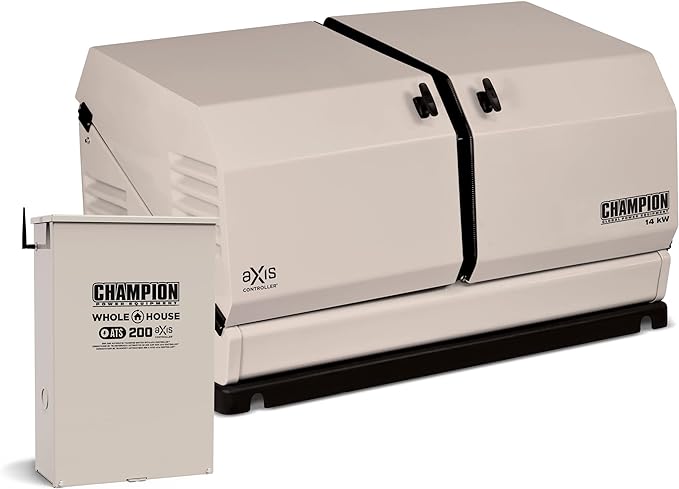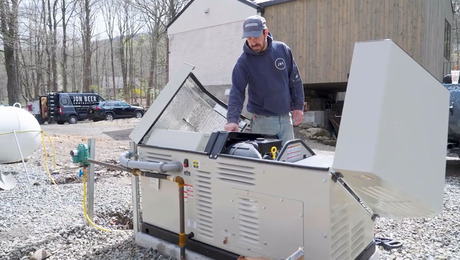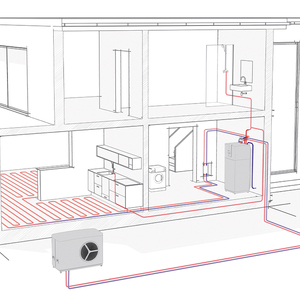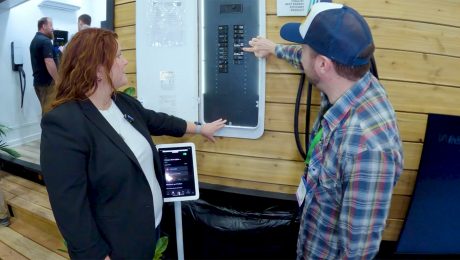A Quiet Standby Generator Brings Peace of Mind
This 22kw automatic backup system seamlessly integrates into the FHB House in New York, ensuring uninterrupted power during outages.
Sponsored by Champion Power Equipment
At the Fine Homebuilding House in New York, Jon Beer and his team installed a 22kw Champion standby generator. This fully automatic generator, accompanied by an automatic transfer switch and four load management modules, ensures uninterrupted power for the mostly electric house and shop. Installed 30 ft. from the house, the generator features a noise-reducing double door and operates at approximately 67 db at full load.
Check Out the Transcript
I’m Jon Beer from Jon Beer Contracting and welcome back to the Fine Home Building House here in Cornwall, New York. We are just about done with the project, and one of the last things that we did was install a standby generator from Champion. Today we’re here to talk about why we did it and how we installed it.

We installed a 22kw fully automatic Champion standby generator as part of the package from Champion. We also installed an automatic transfer switch and four load management modules. Our house is mostly electric, so between the house and the shop that we built here, having a generator that is fully automatic that comes on as soon as we lose power is really important. It will power our entire panel with priority given to the air condensers for the HVAC system and our water heater.
It will sense the loss of utility power and immediately crank on the standby generator and switch the panel over automatically using the transfer switch so that you have a loss of power for about 60 seconds before the generator kicks on and energizes your whole panel. As soon as the electrical grid is restored, it will sense that and then shut off the generator and reroute power from the utility back to the panel.
To integrate a standby generator into the house, you need a couple of different things. The main thing is obviously the generator itself. You need a fuel source of some kind—in our case that was a 300-gal. propane tank. You need an automatic transfer switch that ties into the panel load management modules—connect directly to whichever appliance you want to give priority. With all of those things installed, we now have fully automatic power to bolt the house and the shop. For my business, we chose to install the generator on the side of our driveway about 30 ft. from the house. It keeps the noise level down, but it also keeps it fairly out of view.
The generator has a really cool double-door feature; once it’s closed, it really cuts the noise level of the generator down. When it’s running, at full load it runs about 67 db. There was a point in the build when I realized we were relying a lot on electrification and that I didn’t have a good backup plan for losing power. Having the fully automatic standby generator buys me peace of mind at the end of the day. It’s definitely something we’ll recommend to clients, especially as we push for more electrification. It becomes increasingly important to have power all the time, uninterrupted. I would definitely recommend a unit like this to a client so that they can also have the same peace of mind.
RELATED STORIES
- Advice for Choosing and Using a Backup Generator
- How it Works: Standby Generators
- Installing a Portable Standby Generator
Published June 21, 2024.






































